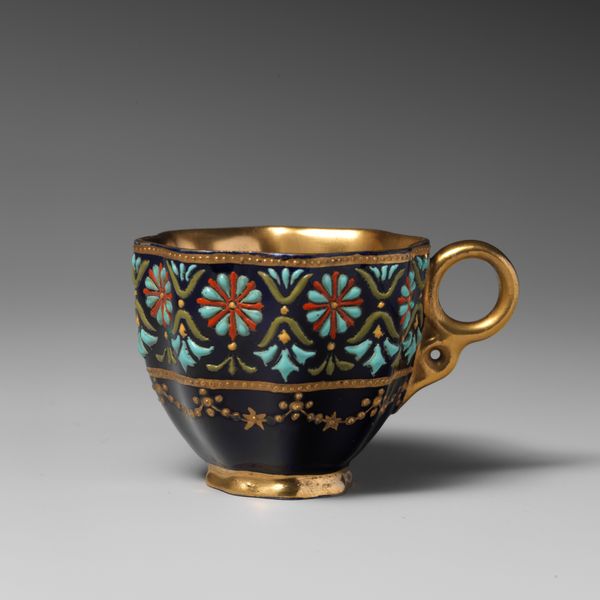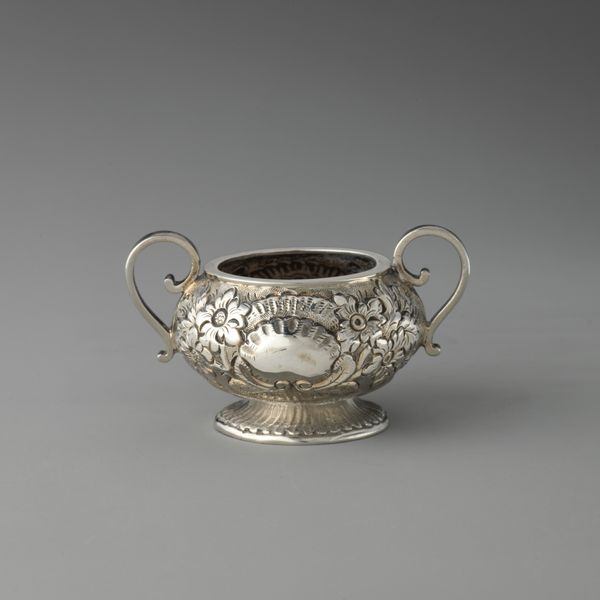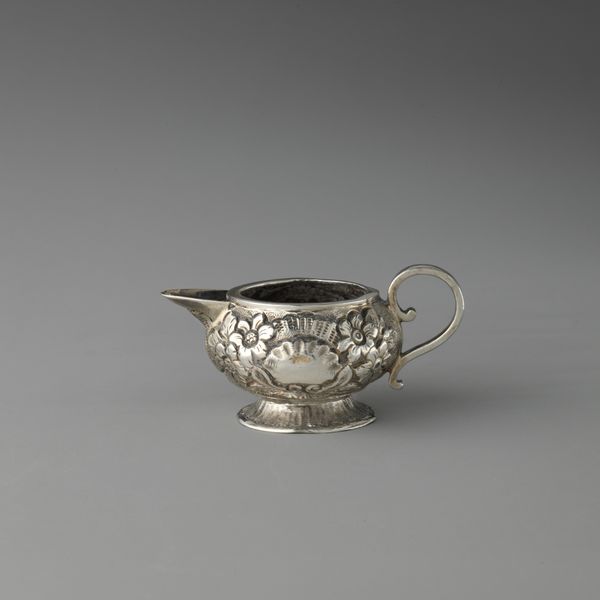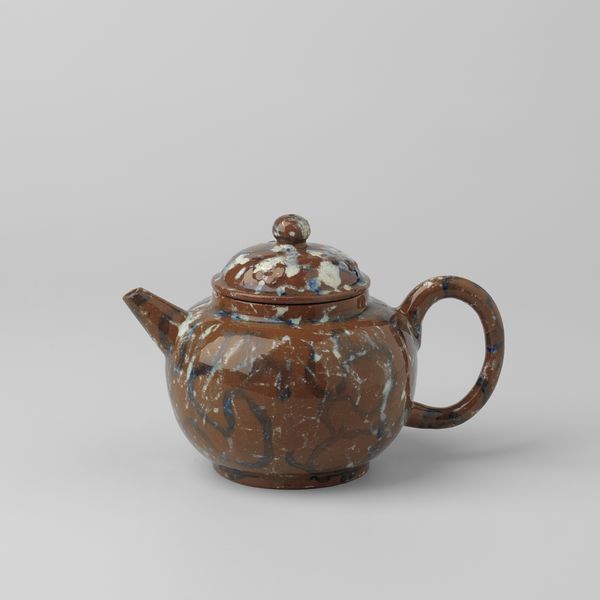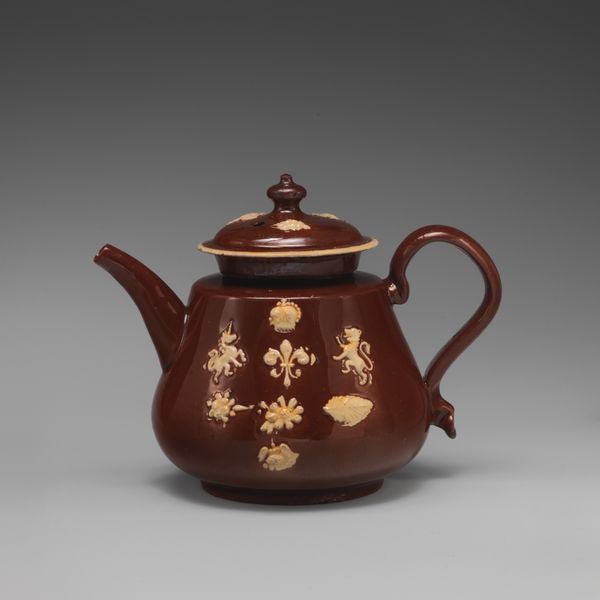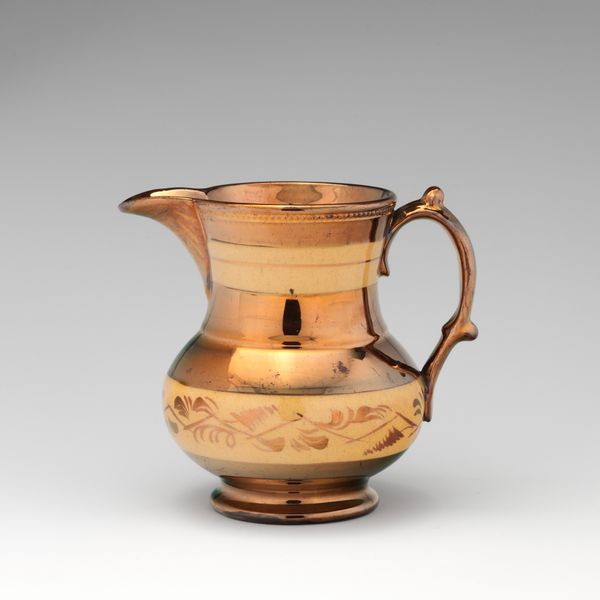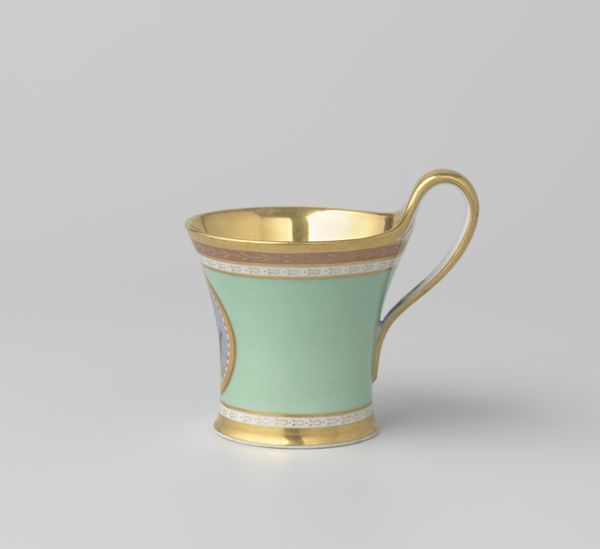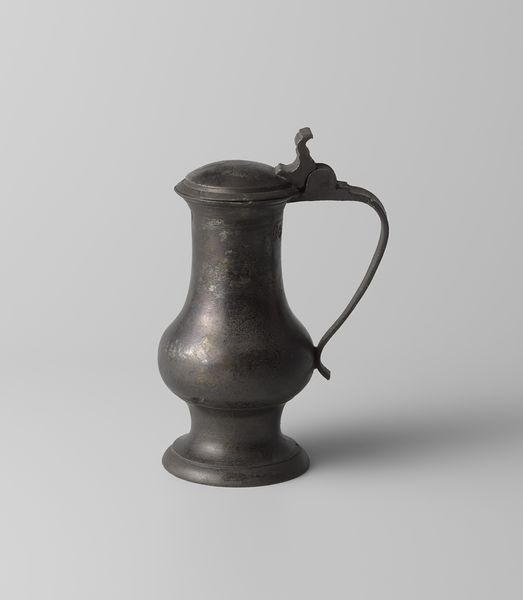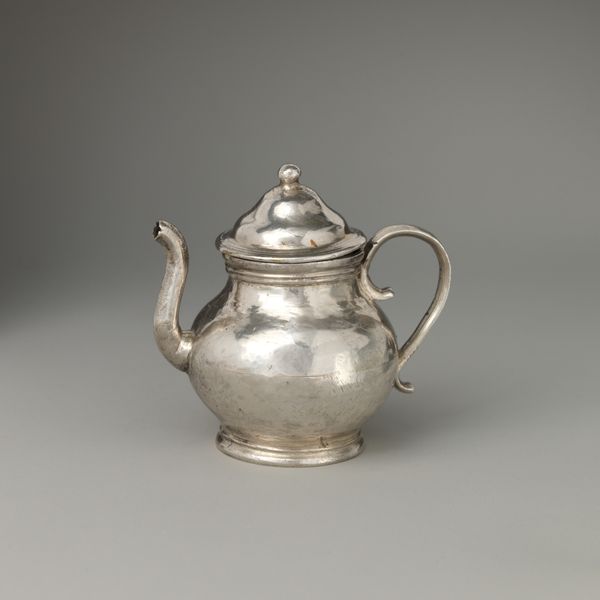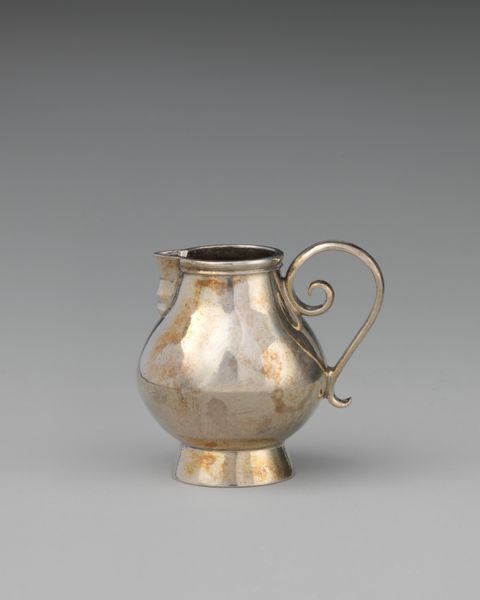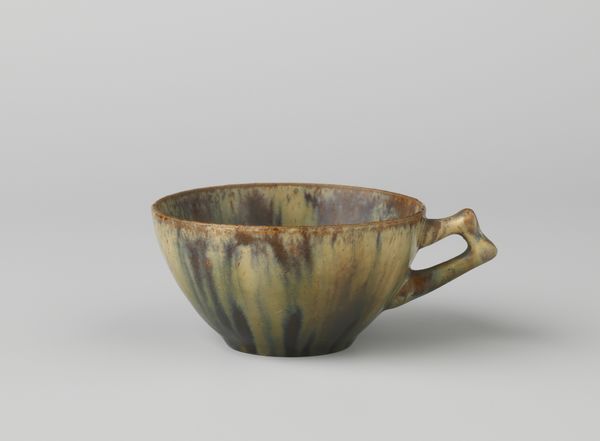
Cup with roundels and ornamental borders c. 1870 - 1900
0:00
0:00
koniglicheporzellanmanufaktur
Rijksmuseum
ceramic, porcelain
#
ceramic
#
porcelain
#
decorative-art
Dimensions: height 8.1 cm, diameter 6.8 cm, diameter 7 cm, diameter 4.3 cm, diameter 9.4 cm
Copyright: Rijks Museum: Open Domain
Curator: Here we have a "Cup with roundels and ornamental borders" crafted circa 1870-1900 by K\u00f6nigliche Porzellan Manufaktur. You'll find it at the Rijksmuseum. What are your initial thoughts? Editor: The crispness of the black contrasting with the gilded interior and accents immediately catches the eye. It’s almost theatrical in its stark contrasts, quite charming! Curator: Absolutely, and when considering the context of its production, porcelain like this wasn't merely decorative. Think of the labor, the skill of the artisans at the KPM manufactory. It represented status, international trade, and even political power. Editor: Yes, but looking at the form, I am most struck by how each line reinforces the object’s intrinsic qualities; the floral roundels give the composition its rhythm, each echoing in shape. Notice the small repeated dots forming a line beneath; pure delight. Curator: The design also prompts thinking about trade routes and material acquisition. The very substance of porcelain involved intricate processes. Raw materials were transported across continents to fuel the porcelain industries of Europe, then, formed by specialized labor forces and consumed by the elites. Editor: Perhaps. I am thinking about the use of geometric principles which make this seem very structured, almost mathematical in its conception, yet it doesn’t detract from its beauty. Curator: Well, in my view, such pieces shed light on class structure. Were the laborers afforded this type of ornate display? Were they able to enjoy the very fruits they were bringing to the European elites, even as simple utility? I think this resonates with our world even now. Editor: Regardless, this teacup reveals how artistry and craft come together. A wonderful example of applied ornament in service of elegance! Curator: Indeed. When we look closely, such decorative arts provide rich insights into social structures that remain relevant today.
Comments
No comments
Be the first to comment and join the conversation on the ultimate creative platform.
